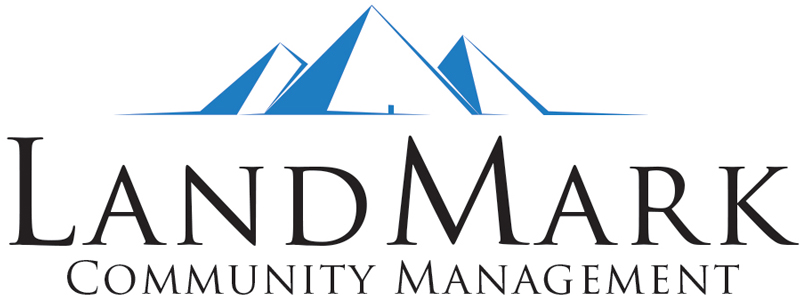HOA financial transparency is crucial for HOA board members to gain the trust of their community members. It also makes residents feel involved in the HOA and avoids unnecessary conflict.
Best Ways to Practice HOA Financial Transparency
In what ways can your community observe HOA financial transparency? Here are some practices to adopt.
1. Communicate Often and Openly
Communication is one of the simplest practices for financial transparency your HOA can adopt. We recommend communicating with the homeowners regularly. Give them updates on the budget and the community’s financial standing. If the association is thinking of increasing the HOA fees, make sure to inform them beforehand. It’s also important to let them know why.
Similarly, it’s crucial to communicate with the residents if the HOA is considering special assessments. The residents are less likely to complain about these fees when they come as no surprise. They’re also more likely to pay the special assessments when they understand why the HOA needs the funds.
2. Provide Short and Straightforward Updates
Homeowners are less likely to review long updates from board members. This is because residents don’t always have the time to skim through four pages’ worth of announcements. Longer updates are also more intimidating to read and can lose people’s interest.
It’s best to keep updates short and straight to the point. This approach encourages people to read and understand the HOA’s updates more thoroughly. It’s certainly more effective, even if it means the HOA has to provide more frequent updates. Consider using text, letters, email, or social media to disseminate the information.
3. Hold Open Board Meetings and Encourage Attendance
Most states, like Texas, require homeowners associations to hold open board meetings. However, many HOAs try to skirt this law by holding closed work sessions to avoid dealing with homeowner input. This may seem like a wise choice for many members of the board, but it will work against you in the long run.
That’s because holding open meetings is a crucial part of HOA financial transparency and accountability. Making these meetings open will allow homeowners to feel included when it comes to making financial decisions. It also allows the board to be transparent with where the community’s funds are going.
In addition, the board must go the extra mile and encourage the homeowners to attend. This will reassure the residents that the board has nothing to hide when it comes to financial management. It also informs everyone of the HOA’s financial issues, status, and decisions.
Finally, consider allotting time for an open forum during the meeting. This can help community members express their concerns and offer insights the board might not have considered. It also assures homeowners that their problems are taken seriously.
4. Share Meeting Minutes
Even if most homeowners attend board meetings, the board should still furnish the residents with the meeting minutes. This keeps everyone in the loop. It also serves as a reminder for the residents who did attend the meeting.
Consider mailing or emailing the minutes to all the homeowners. Homeowners associations with a website or resident portal can also upload the meeting minutes online. Just make sure not to post the minutes somewhere too public, like on a public social media page.
5. Provide Access to Financial Documents

Several states ensure homeowners association financial transparency by requiring HOAs to provide residents access to various financial documents. These include all the association’s financial records, statements, and reports.
HOAs should keep these documents at the ready should any homeowner request to inspect them. Even if you live in a state without such a requirement, it’s still a good idea. This encourages HOA financial transparency and keeps homeowners from being suspicious of the board’s financial activity. Even the smallest detail should not be confidential.
6. Provide an Annual Report
There should also be financial transparency in HOA accounting reports. Make sure to provide homeowners with an annual report including the following information:
- Revenue and expense reports
- Capital expenditures
- Insurance coverage
- Replacement reserve fund statements
- Status of pending or ongoing litigation and judgments
Send the annual report to each homeowner via mail or email. Remember to give it before the annual meeting so the residents can come prepared. In addition, encourage the homeowners to attend the annual meeting to discuss or raise any concerns they may have regarding the report.
7. Conduct Audits and Reviews
Every homeowners association should conduct a comprehensive audit or review to assess the community’s finances. A certified public accountant can examine the HOA’s books, records, and financial statements. They can verify their accuracy and determine whether the statements follow proper accounting practices.
This ensures that the association is not misrepresenting or fabricating any financial information. It can reassure the homeowners that the HOA is not dishonest or making sketchy financial decisions. The homeowners association can conduct the review annually and perform an audit every five years.
8. Involve the Homeowners in Budget Creation
When creating the annual budget, communities that want to encourage HOA financial transparency should consider involving the residents. The HOA board can create a budget committee and encourage volunteers to participate. This reduces confusion among the members and ensures that the HOA board is not making the decisions unilaterally.
Why Is HOA Financial Transparency Important?
HOA financial transparency is a vital part of promoting trust in the association. It allows the HOA board to reassure the members that they are doing what’s best for the community. Moreover, adopting the practices mentioned above can encourage participation from the members so they understand the HOA’s financial needs and standing.
Practicing transparency also limits conflict within the HOA. Finances are often a source of tension in communities, especially when the HOA decides to increase fees or levy special assessments. Promoting transparency and accountability will make the residents feel reassured. They are also more likely to comply with their financial obligations.
Financial Harmony in Homeowners Associations
HOA financial accountability is a necessary part of HOA management. The board members must do everything in their power to ensure that they are held accountable by the community members. This fosters trust and harmony within the community.
Are you having trouble with financial management or financial transparency? Why not hire a reliable HOA management company like Landmark Community Management? We offer professional management services to HOAs around Texas. Call us at 512-569-5527 or contact us online to request a proposal!


